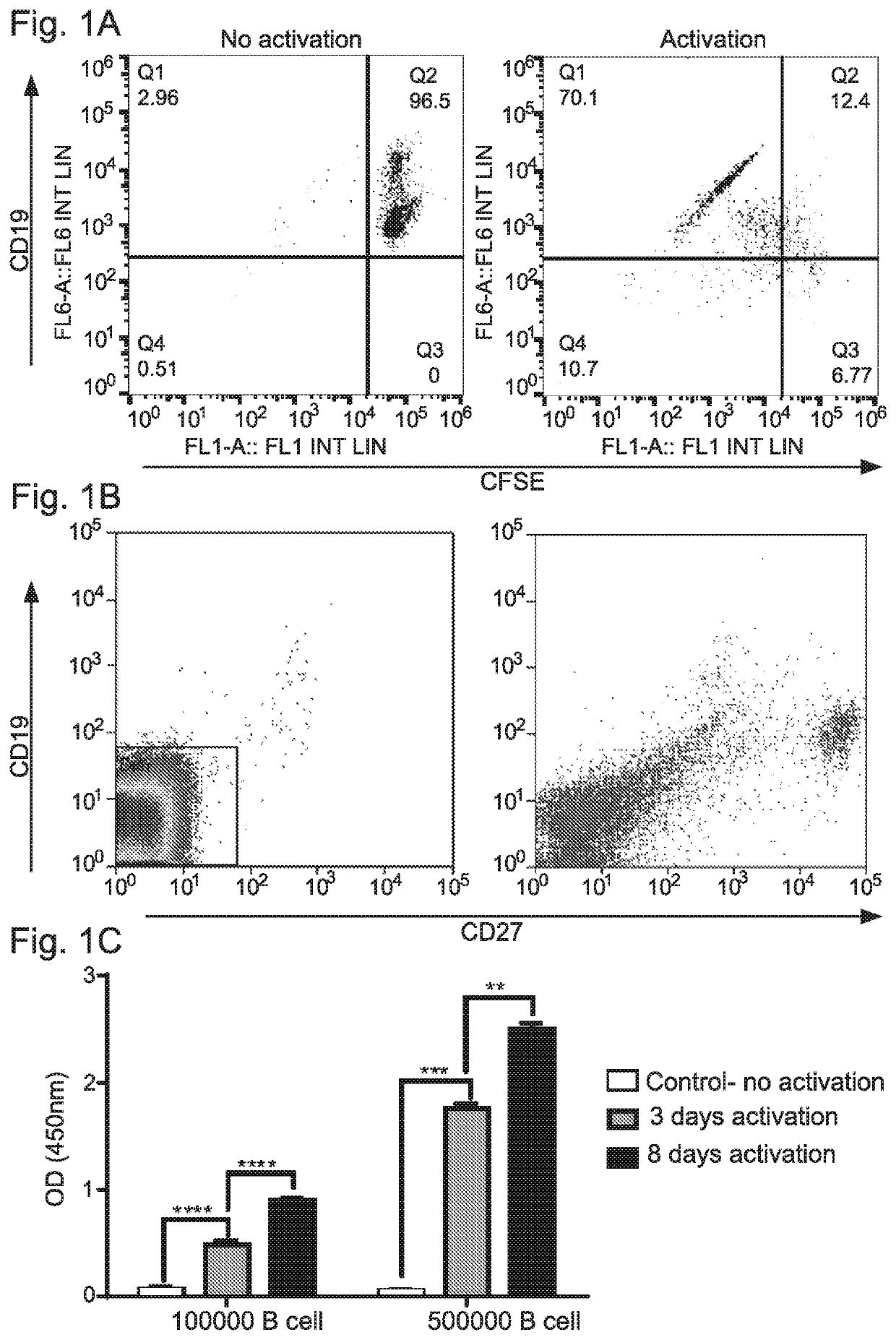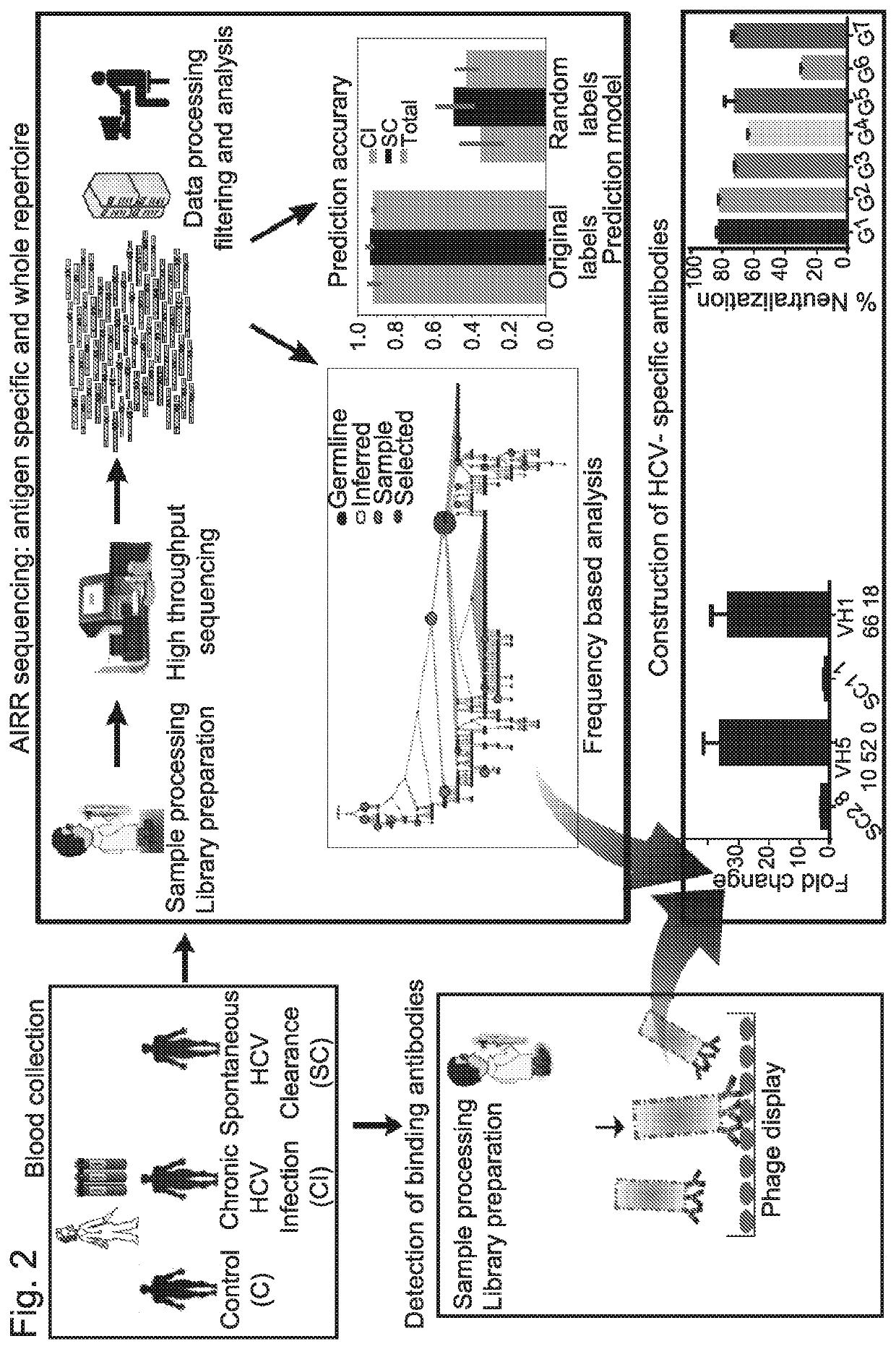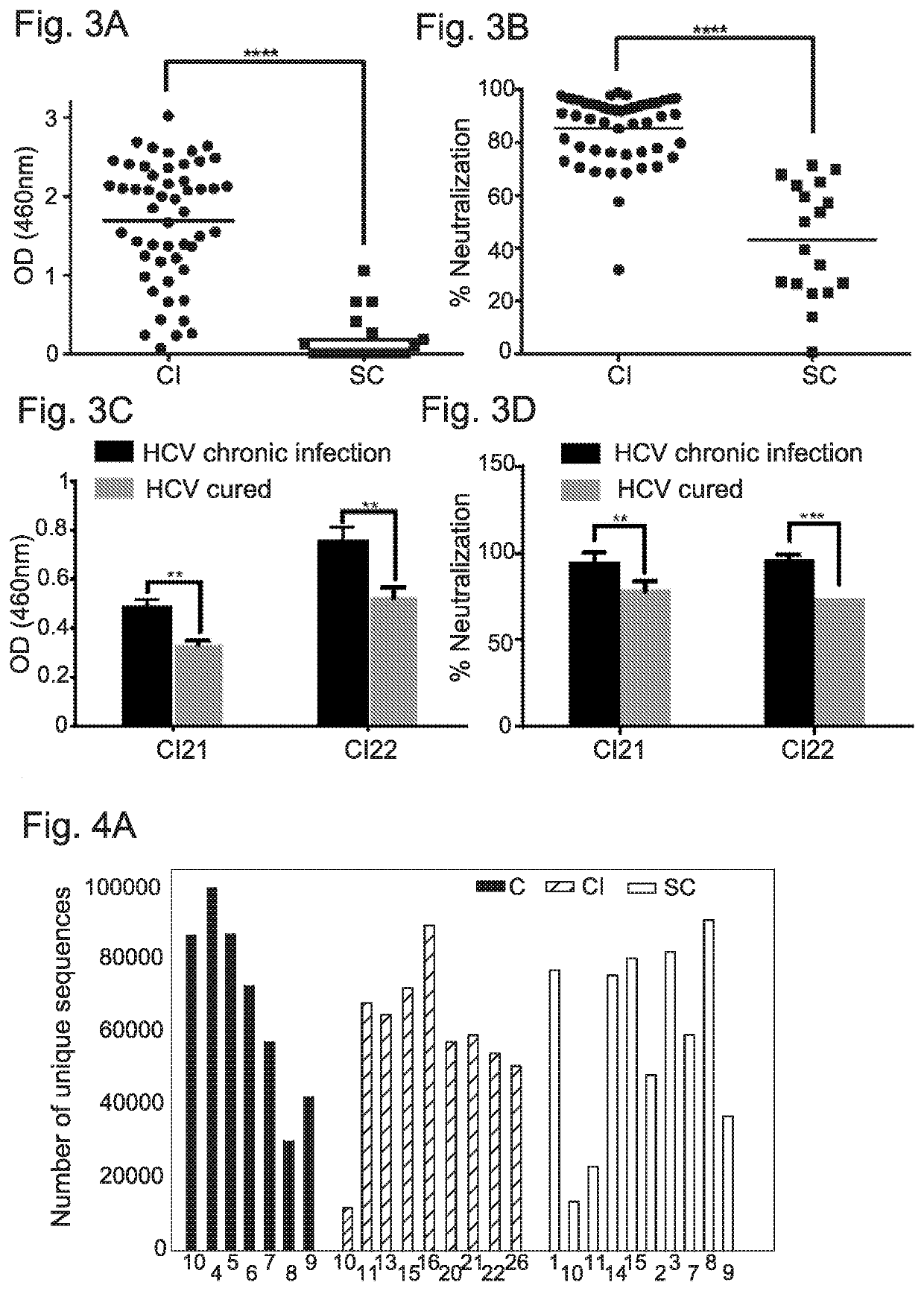Anti-hepatitis c virus antibodies
a technology of hepatitis c virus and antibody, which is applied in the field of hepatitis c infection treatment, can solve the problems of insufficient understanding of the immunity to the virus, many challenges, and no vaccine availabl
- Summary
- Abstract
- Description
- Claims
- Application Information
AI Technical Summary
Benefits of technology
Problems solved by technology
Method used
Image
Examples
example 1
Antibodies in Resolved Infections are Potent Neutralizers
[0306]PBMCs and sera was collected from 80 individuals. Of these, 18 were individuals that spontaneously cleared HCV infection, 52 were with persistent chronic HCV infections, and 10 were from healthy controls.
[0307]Subjects were defined as spontaneously cleared HCV if anti-HCV antibodies are detectable, with undetectable HCV RNA assessed by the Taqman reverse-transcription polymerase chain reaction (RT-PCR) quantitative assays. HCV chronic infections were defined as viremia if there were detectable viral loads for more than 1 year. Both cohorts were not treated with any anti-viral treatment. For the isolation of peripheral blood mononuclear cells (PBMCs), 30-50 ml of whole blood from each donor was separated on Ficoll-Paque gradient (Lymphoprep™) according to the manufacturer's instructions.
[0308]To validate the presence of neutralizing antibodies in sera from CI and SC HCV infections, these sera were first screened by ELISA ...
example 2
iating Features Between SC and CI Antibody Repertoires
[0310]Antibody repertoires were sequenced from 28 individuals; among these are 10 HCV CI, 11 SC that displayed the highest neutralization efficiency as described above (FIG. 3B), and 7 healthy control samples. 104-105 unique full-length heavy chain sequences were identified for each sample (FIG. 4A).
[0311]To identify features in B-cell repertoires that are unique to CI or SC HCV infections, the usage frequency of each V and J gene segment were evaluated, as well as the CDR3 length, and the mutation frequencies across the V genes. Sequences were grouped by their V gene, J gene, and CDR3 length, clustered by genetic distance, and the frequencies within and between the clinical groups were compared. No significant differences were observed in CDR3 length, V, and J gene distributions between the clinical groups (FIG. 4B-4C-4D). V-J gene combinations, as well as V-J-CDR3 length also did not yield significant results. A similar analysi...
example 3
Learning Model Predicts Clinical Outcomes Based on the Antibody Repertoire
[0314]To determine whether a combination of features, rather than one at a time, would provide better insight into the antibody sequences that participate in the response to HCV, a machine learning approach was used, which predicts the clinical group based on a combination of features. This approach can be utilized not only as a prediction model; it can also be used as a tool to identify significant features that did not arise in the single-feature analysis.
[0315]For feature selection, frequency per sample was calculated for each cluster of sequences. To avoid false clusters that may occur due to grouping of several erroneous sequences with correct ones, rare clusters that appeared at low frequencies or in fewer than four samples were removed. Then, two samples were left out as a test set, and the model was trained on the remaining samples.
[0316]A random forest model was applied to extract the best 18 clusters...
PUM
| Property | Measurement | Unit |
|---|---|---|
| Fraction | aaaaa | aaaaa |
| Dimensionless property | aaaaa | aaaaa |
| Length | aaaaa | aaaaa |
Abstract
Description
Claims
Application Information
 Login to View More
Login to View More - R&D
- Intellectual Property
- Life Sciences
- Materials
- Tech Scout
- Unparalleled Data Quality
- Higher Quality Content
- 60% Fewer Hallucinations
Browse by: Latest US Patents, China's latest patents, Technical Efficacy Thesaurus, Application Domain, Technology Topic, Popular Technical Reports.
© 2025 PatSnap. All rights reserved.Legal|Privacy policy|Modern Slavery Act Transparency Statement|Sitemap|About US| Contact US: help@patsnap.com



